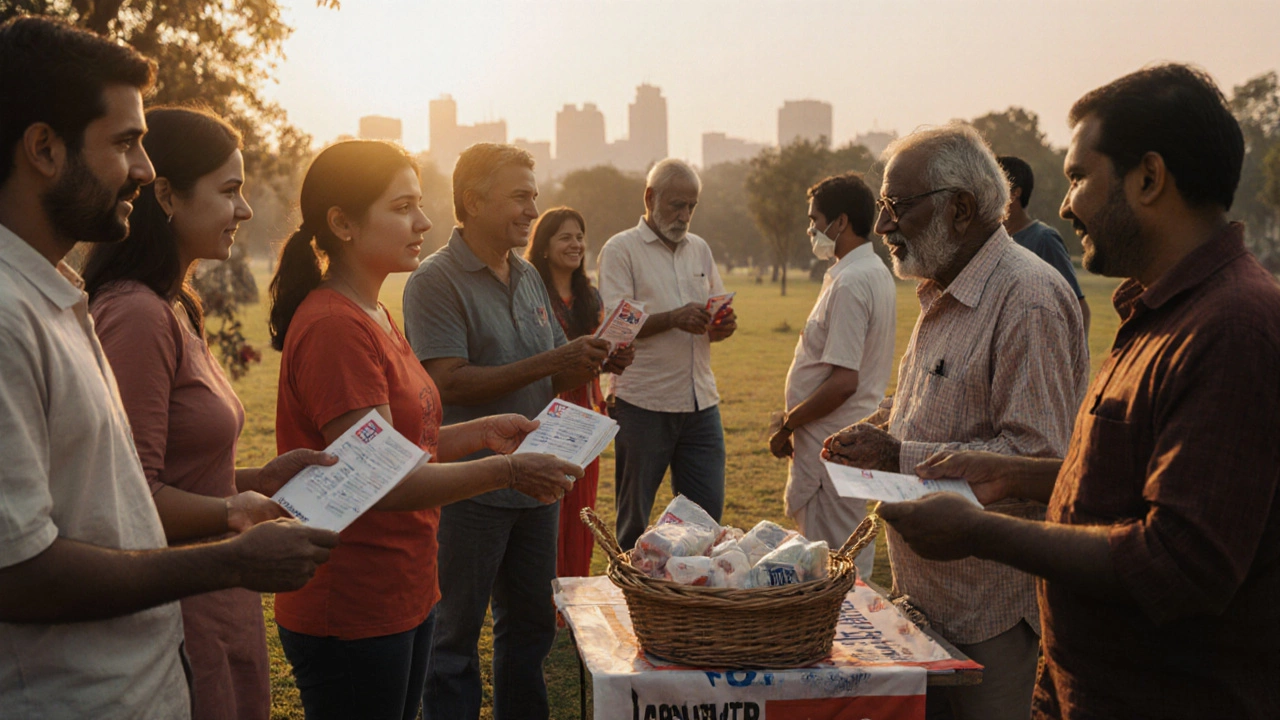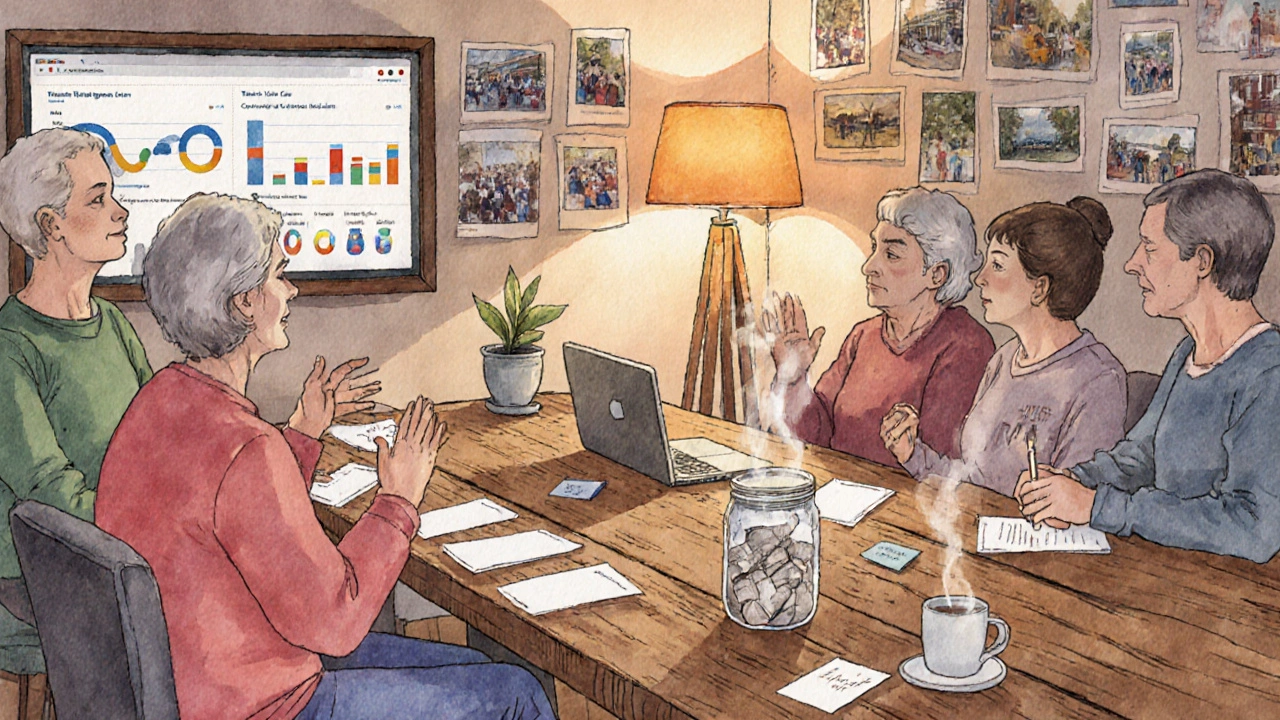The Real Reasons Behind Community Outreach: Why People Do It
 Oct, 13 2025
Oct, 13 2025
Outreach Motivation Assessment Tool
What's your primary motivation for outreach?
Select the reason that best describes why you engage in community outreach
Understanding why people engage in outreach can unlock better strategies for any cause or business looking to build genuine connections.
Key Takeaways
- Outreach stems from a mix of altruism, personal growth, and strategic goals.
- Effective outreach creates measurable social impact and strengthens relationships.
- Choosing the right motivation guides the tactics you should use.
- Common pitfalls include lack of focus, over‑promising, and ignoring feedback.
- A clear plan-goal, audience, message, channel, follow‑up-boosts success.
What is outreach?
When we talk about outreach is a proactive effort to connect with individuals or groups outside your immediate circle, usually to share information, resources, or support. It can happen in person, online, or via phone, and it often targets people who could benefit from or contribute to a cause.
Why do people do outreach?
Motivation isn’t one‑size‑fits‑all. Below are the six most common drivers, each with its own ripple effects.
- Altruism - giving back. Many volunteers act out of pure compassion. They want to see less hunger, less homelessness, or a cleaner environment. This inner drive fuels long‑term commitment.
- Networking - expanding contacts. Professionals see outreach as a way to meet peers, potential partners, or mentors. Building a robust network can open doors to new projects or career moves.
- Skill development - learning by doing. New roles let people practice public speaking, project management, or fundraising. Real‑world experience often beats classroom theory.
- Brand building - raising awareness. Nonprofits and businesses alike use outreach to boost visibility. A strong brand attracts donors, volunteers, and media coverage.
- Influence - shaping opinions. Advocacy groups leverage outreach to shift public policy or cultural norms. Persuasive messaging can turn a silent majority into active supporters.
- Personal growth - confidence and purpose. Engaging with diverse communities challenges assumptions and builds empathy, leading to a deeper sense of purpose.
How outreach creates impact
When the right motivation meets the right strategy, the outcomes are tangible.
- Community members gain access to resources they might never have found on their own.
- Nonprofit organizations see increased donations and volunteer hours.
- Volunteers report higher satisfaction and retention, feeding a virtuous cycle.
- Public awareness rises, often leading to policy changes or corporate responsibility initiatives.
- Partnerships form between unlikely allies-businesses, schools, faith groups-creating a broader support network.
Step‑by‑step guide to effective outreach
- Define a clear goal. Is the aim to raise $10,000, recruit 50 volunteers, or simply spread a health message?
- Identify your audience. Use demographics, psychographics, and existing stakeholder data to pinpoint who will benefit most and who can help you.
- Craft a compelling message. Highlight the problem, the solution, and a concrete call‑to‑action. Keep it short, relatable, and benefit‑focused.
- Choose the right channels. Face‑to‑face events, social media, local radio, or email newsletters-match the channel to the audience’s habits.
- Build partnerships. Reach out to schools, business clubs, or faith groups. A partnership multiplies reach without extra cost.
- Execute and engage. Show up, listen, answer questions, and collect contact info for follow‑up.
- Measure results. Track metrics like sign‑ups, donations, media mentions, or social shares. Use simple tools-Google Forms, Excel, or a free CRM.
- Follow up. Send thank‑you notes, share impact stories, and invite participants to the next step.

Common pitfalls and how to avoid them
Even well‑intentioned outreach can stumble. Here are three frequent errors and quick fixes.
- Lack of focus. Trying to help everyone spreads resources thin. Narrow your scope to one clear objective per campaign.
- Over‑promising. If you claim you’ll solve a problem entirely, disappointment follows. Set realistic expectations and be transparent about limitations.
- Ignoring feedback. Post‑event surveys or informal chats reveal what worked and what didn’t. Treat criticism as data for improvement.
Motivation vs. Benefit Comparison
| Motivation | Primary Benefit | Typical KPI |
|---|---|---|
| Altruism | Increased community well‑being | Number of beneficiaries served |
| Networking | Expanded professional contacts | New partnerships formed |
| Skill Development | Improved volunteer competence | Hours of training completed |
| Brand Building | Higher public awareness | Media mentions & social reach |
| Influence | Policy or attitude shift | Petitions signed, votes changed |
| Personal Growth | Greater volunteer retention | Repeat volunteer rate |
Frequently Asked Questions
What exactly counts as outreach?
Outreach includes any intentional effort-door‑to‑door visits, phone calls, social media campaigns, workshops, or email newsletters-designed to inform, assist, or engage people outside your immediate network.
How can I measure the success of an outreach program?
Pick metrics that match your goal: number of contacts added, donations received, volunteer hours logged, media impressions, or policy changes. Track them before and after the campaign to see the lift.
Is outreach only for nonprofits?
No. Businesses, schools, government agencies, and even individuals use outreach to build brand reputation, recruit talent, or foster community ties.
What are cheap but effective outreach channels?
Social media posts, local community bulletin boards, partnerships with existing clubs, and volunteer‑led word‑of‑mouth are low‑cost yet high‑impact when the message resonates.
How do I keep volunteers motivated after the first outreach event?
Share success stories, recognize contributions publicly, offer skill‑building opportunities, and involve volunteers in planning the next steps. Feeling valued fuels long‑term engagement.